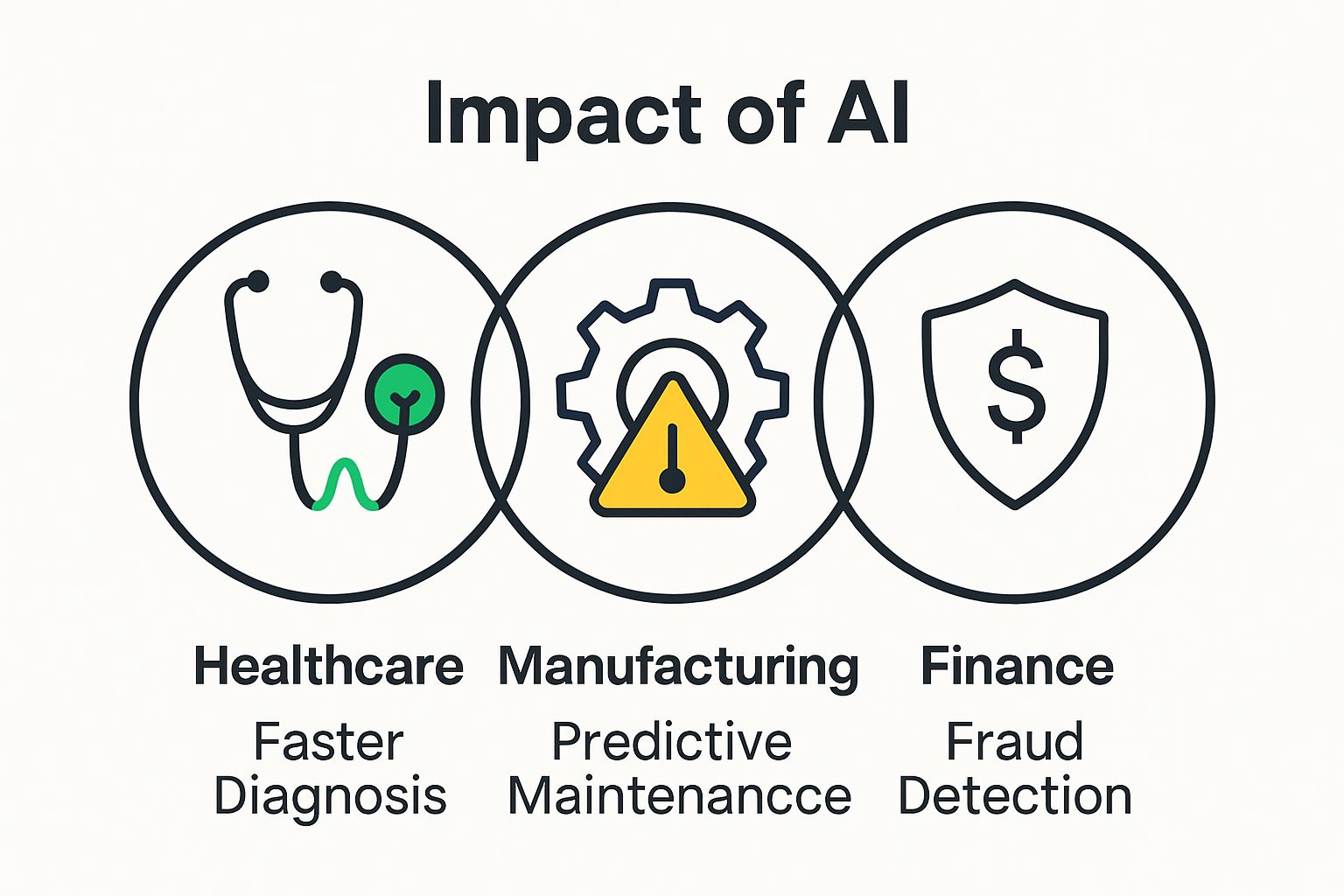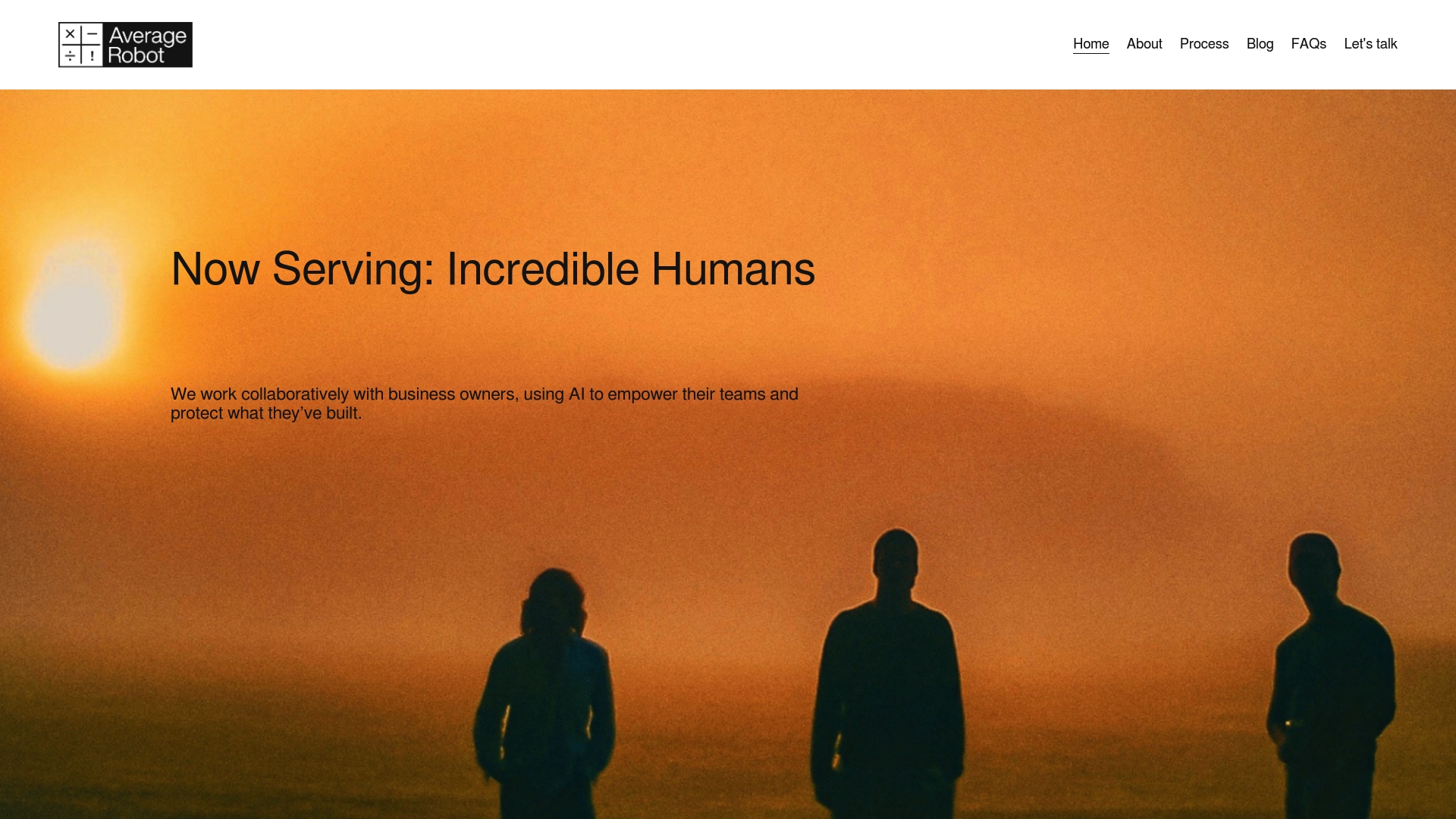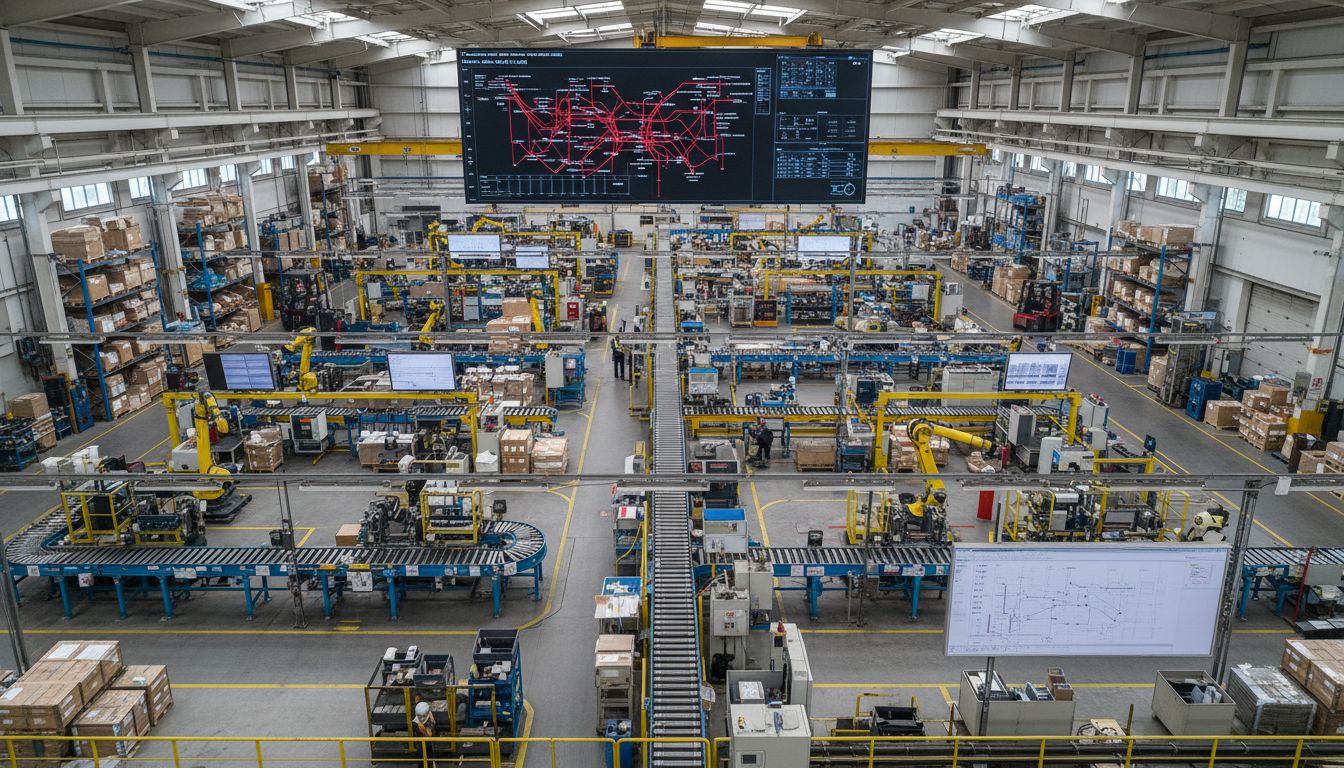Understanding Emerging AI Applications in 2025

Artificial Intelligence is quickly reshaping how businesses thrive and solve problems. By 2025, AI applications are expected to generate unprecedented economic value across every major sector. Most people picture AI as cold automation replacing jobs. Surprise. The latest wave of intelligent systems is all about empowering people and transforming industries in ways that put human decision making at the center.
Table of Contents
- Defining Emerging AI Applications And Their Evolution
- The Significance Of AI Applications In Today’s Business Landscape
- Core Technologies Driving Emerging AI Applications
- Real-World Applications That Are Changing Industries
- Future Trends And Considerations For Business Leaders
Quick Summary
| Takeaway | Explanation |
|---|---|
| AI enhances human decision-making | Emerging AI applications focus on augmenting rather than replacing human intelligence, creating supportive frameworks for decision-making. |
| Interdisciplinary integration is key | Successful AI technologies integrate across sectors, leveraging diverse datasets to solve complex problems collaboratively. |
| Ethical implementation is essential | Organizations must prioritize transparency and accountability in AI development to address ethical concerns and ensure responsible use. |
| Strategic foresight drives competitive advantage | A proactive approach to AI integration, focusing on human potential and ethical governance, will distinguish forward-thinking businesses. |
| AI applications lead to economic transformation | These technologies not only boost productivity but drive innovation, fundamentally reshaping business strategies and operational models. |
Defining Emerging AI Applications and Their Evolution
Artificial Intelligence continues to transform how businesses operate, solve problems, and create value. As we approach 2025, emerging AI applications represent a sophisticated ecosystem of technological innovations that go far beyond simple automation. Explore strategic AI opportunities for understanding how these technologies can reshape organizational capabilities.
The Shifting Landscape of AI Capabilities
Emerging AI applications are distinguished by their ability to move beyond traditional rule-based systems into more adaptive, contextually intelligent frameworks. According to the Stanford AI Index Report, these applications are characterized by several key evolutionary traits:
- Advanced machine learning models with improved generalization
- Increased capacity for understanding complex, nuanced human contexts
- Enhanced predictive and prescriptive analytical capabilities
Interdisciplinary AI Integration
What sets emerging AI applications apart is their profound interdisciplinary nature. These technologies are no longer siloed within specific technological domains but are increasingly integrated across multiple sectors like healthcare, finance, manufacturing, and education. This cross-pollination enables more holistic problem-solving approaches that leverage diverse datasets and computational methodologies.
The core philosophy driving these applications centers on human-centric design. Rather than replacing human intelligence, emerging AI technologies aim to augment and empower human decision making. This means creating systems that are transparent, accountable, and aligned with ethical considerations.
By 2025, successful AI applications will be those that demonstrate not just technical sophistication, but a deep understanding of human organizational dynamics and strategic objectives. Business leaders must view AI not as a standalone technology, but as a collaborative tool that requires strategic vision, continuous learning, and responsible implementation.
The Significance of AI Applications in Today’s Business Landscape
AI applications have transitioned from experimental technologies to critical strategic assets for businesses seeking competitive advantage. Discover how AI can future-proof your business and transform operational capabilities in an increasingly complex digital ecosystem.
Economic and Operational Transformation
According to McKinsey Global Institute, AI applications are estimated to generate substantial economic value across multiple sectors. These technologies are not merely productivity tools but fundamental drivers of strategic innovation. The economic impact extends beyond immediate cost savings, encompassing profound shifts in how organizations conceptualize and execute business strategies.
Key areas of transformative impact include:
- Predictive decision making with unprecedented accuracy
- Automated complex process management
- Real-time risk assessment and mitigation strategies
Strategic Competitive Advantage
Businesses implementing AI are fundamentally reimagining their operational models. Intelligent systems enable organizations to process massive datasets, identify nuanced patterns, and generate insights that were previously impossible. This capability allows companies to move from reactive to proactive strategic planning.
The most successful AI implementations focus on augmenting human intelligence rather than replacing it. By creating symbiotic relationships between advanced algorithms and human expertise, organizations can unlock new levels of innovation and efficiency. Strategic AI adoption means developing technologies that are transparent, ethical, and aligned with core business objectives.
By 2025, businesses that view AI as a collaborative tool for organizational growth will distinguish themselves in increasingly competitive markets. The future belongs to those who can effectively integrate intelligent technologies while maintaining a human-centric approach to innovation and problem solving.
Core Technologies Driving Emerging AI Applications
The technological foundations of emerging AI applications represent a complex ecosystem of advanced computational methodologies. Learn about AI’s role in product development to understand how these sophisticated technologies are reshaping innovation strategies.
Foundational Machine Learning Architectures
According to the Stanford AI Index Report, emerging AI technologies are characterized by increasingly sophisticated machine learning architectures. These architectures move beyond traditional linear models into more adaptive, contextually intelligent frameworks that can learn, generalize, and make nuanced predictions across diverse scenarios.
Key technological components include:
- Transformer models with enhanced contextual understanding
- Neural networks capable of multidimensional pattern recognition
- Reinforcement learning systems with dynamic adaptation capabilities
Advanced Computational Paradigms
Generative AI technologies represent a quantum leap in computational intelligence. Unlike previous generations of AI that were primarily reactive or analytical, these systems can generate novel content, simulate complex scenarios, and provide creative problem solving approaches. This shift represents more than technological improvement; it signifies a fundamental reimagining of how artificial intelligence interacts with human creativity.
The most advanced AI applications integrate multiple technological approaches.
They combine machine learning, natural language processing, computer vision, and predictive analytics into cohesive systems that can understand context, learn from interactions, and generate sophisticated outputs that are increasingly indistinguishable from human-generated solutions.
By 2025, successful AI technologies will be defined not just by their computational power, but by their ability to create meaningful, contextually appropriate interactions that augment human capabilities and drive strategic innovation.
The table below breaks down the core technologies driving emerging AI applications by 2025, highlighting their key components and the impact they offer in real-world business scenarios.
| Technology Paradigm | Key Components | Business Impact |
|---|---|---|
| Foundational Machine Learning | Transformer models, neural networks, reinforcement learning | Improved predictive, adaptive, and context-aware decision making |
| Generative AI | Content generation, scenario simulation | Creative problem solving, novel content creation |
| Interdisciplinary Integration | Machine learning, NLP, computer vision, predictive analytics | Holistic solutions, data-driven innovation across functions |
| Advanced Computational Architectures | Multidimensional pattern recognition, dynamic adaptation | Higher efficiency, better ability to handle complex problems |
Real-World Applications That Are Changing Industries
AI technologies are revolutionizing industries by transforming traditional operational models and introducing unprecedented levels of efficiency and innovation. Learn about adaptive AI technologies to understand how intelligent systems are reshaping business capabilities.
Healthcare and Medical Innovation
According to the Office of the National Coordinator for Health Information Technology, AI-enabled medical technologies are dramatically improving diagnostic accuracy and patient care. These intelligent systems go beyond traditional diagnostic tools, offering capabilities that include:
- Early disease detection through advanced pattern recognition
- Personalized treatment recommendation algorithms

- Real-time medical image analysis and interpretation
Transformative Industry Applications
AI applications are not confined to a single sector but are creating revolutionary changes across multiple industries. In manufacturing, intelligent systems optimize production processes, predict equipment maintenance needs, and enhance quality control. Financial services leverage AI for fraud detection, risk assessment, and personalized investment strategies.

The most profound impact emerges from AI’s ability to process massive datasets and generate insights that were previously impossible. By integrating machine learning, natural language processing, and predictive analytics, these technologies enable businesses to move from reactive to proactive strategic planning. Successful AI implementation means creating symbiotic relationships between advanced algorithms and human expertise.
By 2025, organizations that view AI as a collaborative tool for strategic growth will distinguish themselves in increasingly complex and competitive markets.
The following table summarizes how AI is transforming major industries as discussed in the article, emphasizing primary use cases and the specific value delivered in each sector.
| Industry | Primary AI Application Areas | Key Value Delivered |
|---|---|---|
| Healthcare | Early disease detection, personalized treatment | Improved diagnostics, enhanced patient care |
| Manufacturing | Process optimization, predictive maintenance | Higher efficiency, reduced downtime |
| Financial | Fraud detection, risk assessment, personalization | Better risk management, customized services |
| Education | Adaptive learning, automated assessments | Personalized learning, operational savings |
| Business Ops | Real-time analytics, process automation | Proactive planning, increased productivity |
| The future belongs to those who can effectively integrate intelligent technologies while maintaining a human-centric approach to innovation and problem solving. |
Future Trends and Considerations for Business Leaders
The evolving AI landscape demands strategic foresight and proactive leadership. Discover opportunities for business leaders in AI transformation to navigate the complex technological ecosystem emerging in 2025 and beyond.
Ethical AI and Governance
Business leaders must recognize that AI implementation is not merely a technological challenge but a profound organizational and ethical responsibility. Responsible AI development requires comprehensive governance frameworks that prioritize transparency, accountability, and human-centric design.
Key ethical considerations include:
- Robust data privacy and protection protocols
- Algorithmic fairness and bias mitigation strategies
- Clear accountability mechanisms for AI decision making
Strategic AI Investment and Talent Development
Successful AI integration goes beyond technology acquisition. Organizations must cultivate a holistic approach that views AI as a collaborative platform for human potential. This means investing not just in technological infrastructure but in developing organizational capabilities that can effectively leverage intelligent systems.
The most forward thinking businesses will focus on creating adaptive learning environments where human creativity and machine intelligence work synergistically. This requires continuous skill development, cross functional collaboration, and a willingness to experiment with emerging technological paradigms.
By 2025, competitive advantage will be defined by an organization’s ability to integrate AI technologies while maintaining human agency and strategic control. Business leaders must think beyond immediate technological solutions and develop comprehensive, flexible strategies that can evolve with rapidly changing technological landscapes.
Ready to Turn Emerging AI Insights Into Real-World Business Results?
You have just read how adaptive, human-centric AI applications are changing industries in 2025. But complex technologies and shifting landscapes also present major hurdles. Leaders like you are asking: How can we actually apply these innovations, cut through the buzz, and drive outcomes that matter for our business? You want more than trends—you need tailored strategies for operational efficiency, risk reduction, and growth, as highlighted in this article’s discussion on strategic competitive advantage.

Now is the best moment to make your next move. Don’t let uncertainty or complexity hold your business back. Speak directly with our experts, access proven frameworks, and see how 25 years of global experience can turn theory into practical results. Visit Average Robot to start transforming your AI vision into strategic value. Take the lead before competitors do—discover how our AI consulting services empower business leaders like you to own your future with confidence.
Frequently Asked Questions
What are the key advancements in emerging AI applications by 2025?
Emerging AI applications by 2025 will showcase advanced machine learning models and enhanced predictive analytics. To stay ahead, explore current trends in AI technologies to understand their capabilities and potential impacts on your industry.
How can organizations implement AI while ensuring ethical considerations?
Organizations can implement AI responsibly by establishing comprehensive governance frameworks that prioritize transparency and fairness. Start by creating data privacy protocols and developing strategies for algorithmic bias mitigation within your organization.
What steps can businesses take to adopt AI technologies effectively?
Businesses should take a structured approach by investing in both technology and talent development. Focus on training your workforce to collaborate with AI systems, which can enhance decision-making and creativity in the workplace.
How do AI applications transform operational models across industries?
AI applications transform operational models by enabling organizations to make predictive decisions and optimize processes. Begin by identifying specific areas in your operations where AI can introduce efficiencies, such as in supply chain management or customer insights.
What impact will AI have on decision-making processes in businesses by 2025?
AI is set to enhance decision-making processes by providing insights derived from large datasets, allowing firms to shift from reactive to proactive strategies. To harness this, analyze current decision-making frameworks and identify points where AI-derived insights can drive significant improvements.
How can businesses prepare for the integration of AI technologies by 2025?
Preparing for AI integration involves evaluating your current technological landscape and identifying gaps in capabilities. Conduct an internal audit to determine technological needs and prioritize skill development in your team to adapt to these changes effectively.
Recommended
- About | Discover Opportunities - Schedule Today — Average Robot
- About | Discover Opportunities - Schedule Today — Average Robot
- What is Adaptive AI? Understanding Its Importance and Function
- What is AI Governance? Understanding Its Importance and Impact
- The Impact of AI on SEO in 2025: Key Changes for Businesses




